The Cribs talk signature Squiers, guitar geekery and lessons of longevity
Ryan and Gary Jarman on a pipe dream come true

Introduction
Custom Squier shapes, vampiric apparitions and ‘aerial work’ - we celebrate the enduringly weird and wonderful world of The Cribs.
Neither bassist Gary or guitarist Ryan have wasted the opportunity to create a unique instrument
When MusicRadar meets The Cribs it is some 15 years on from their inception. Today, just as they did countless times in their teens, Gary and Ryan Jarman have slung their gigbags on their backs, hailed the local bus in Wakefield and ridden it into Leeds.
In the early 2000s it would be to spend another day forging a burgeoning local DIY scene and establishing their entirely distinctive brand of frenetic, warped guitar pop. Now, come summer 2016, and the twins are visiting from their homes in the US, headlining Leeds’ Millennium Square in front of an audience of 8,000 and, most importantly, unzipping those gigbags to reveal brand new Squier signature models.
As self-professed geeks and longterm fans of Fender’s weirdest back catalogue rarities, neither bassist Gary or guitarist Ryan have wasted the opportunity to create a unique instrument. We sat down with the Jarman brothers to ponder their roots, their playing and the dustier items in The Big F’s storeroom…
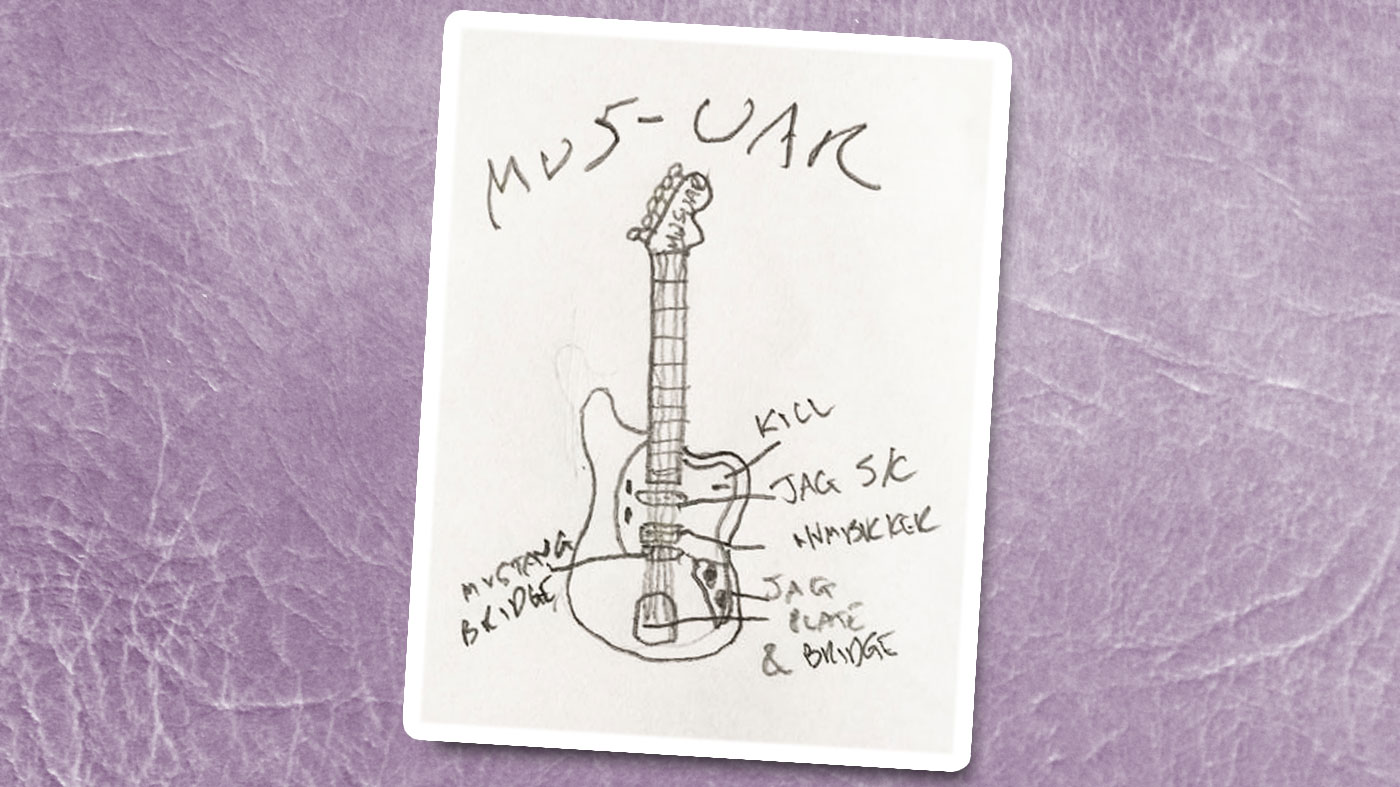
Body work
Unusually, both of your signatures feature new body shapes, albeit inspired by the Jagstang and the Bass V. How did they come about?
It started because we’ve always been big fans of all the really weird Fenders
Gary: “It started because we’ve always been big fans of all the really weird Fenders. My first real love was the Squier Vista series. They were really good quality and really affordable and they also made weird shapes - the Musicmaster bass, the Venus, the first Jagmasters, the Super-Sonic - the works.
“We were just really drawn to them and from then on we looked for all of the oddballs. Neil [Whitcher, Head of Artist Relations] at Fender says that we know stuff about the weird Fenders that people down there don’t even know.
“So the first conversations came about because we were at Fender for an opening party and Neil took us over to Justin [Norvell], who’s head of the California stuff, and was like, ‘Come on, show this guy! Give him some weird knowledge!’”
Ryan: “I’d actually Photoshopped my guitar design once [see his recreation of an early sketch above - Ed]. I was on holiday in Mexico and I was bored, so I did a rough mock-up of it, so when we were bending Justin’s ear about the oddballs…”
Gary: “We were just like, ‘When are you going to reissue the Swinger? When are you going to reissue the Maverick?’ [laughs]”
Ryan: “Then I had that design on my phone and I was like, ‘What do you think to this guitar?’ And they were like, ‘What is this? That’s really rad!’”
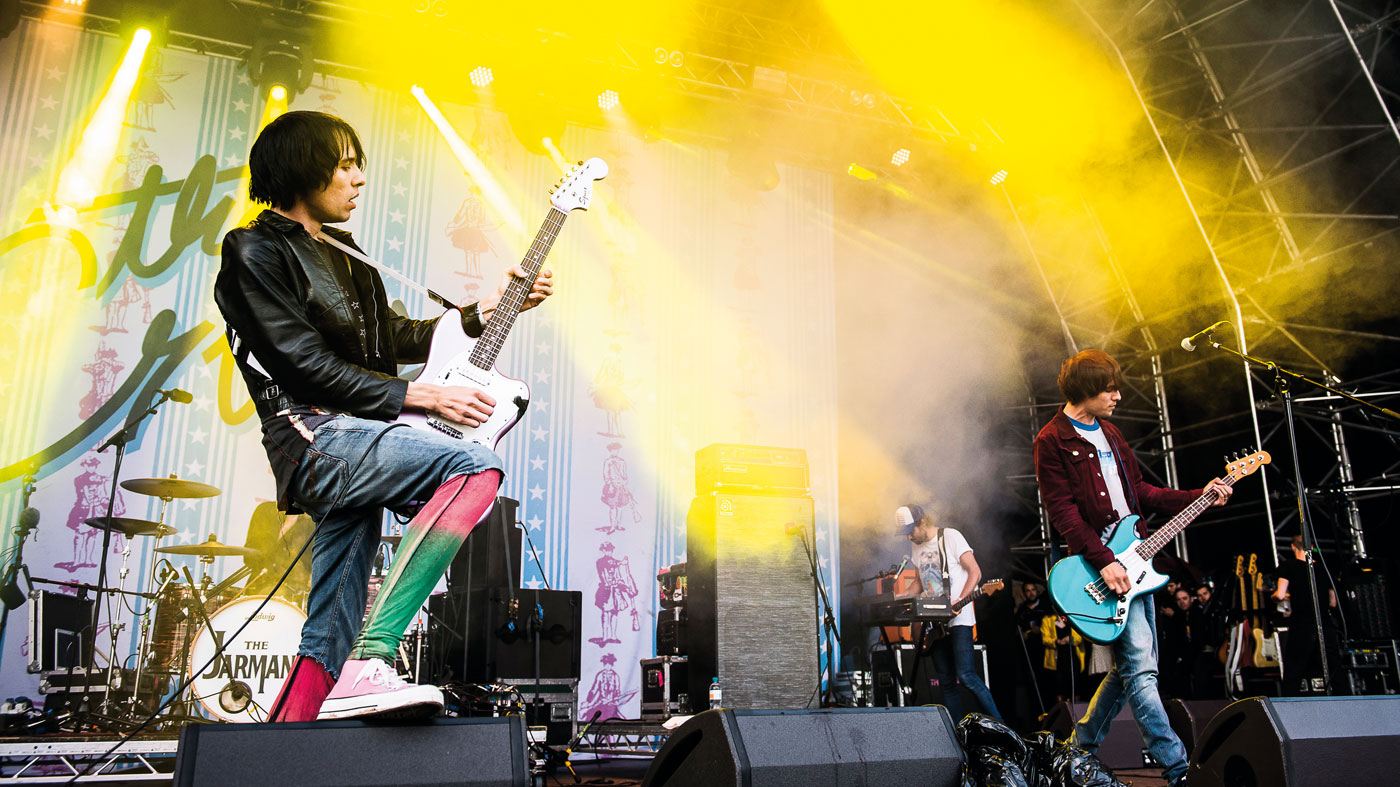
R&D
What were your main concerns during the design process?
Gary: “We really wanted the guitars to be, if not your first guitar, then your first nice guitar that’s well-built and sounds good.”
Ryan: “And affordable enough that people won’t be scared of modding them. I really don’t want people to see them as our guitars; they should make them their own. My motivation was the childhood fantasy of designing a new Fender shape, you know? Of putting a new Fender body shape on the market.”
I really don’t want people to see them as our guitars; they should make them their own
Gary: “If you think about it, what guitar do you really love? It’s your workhorse, it’s not the one that gets polished on a Sunday. It’s the one you remember taking to band practice when you were 16, that you stuck stickers on…”
Ryan: “Not the one with the mammoth tusk bridge, you know what I mean?”
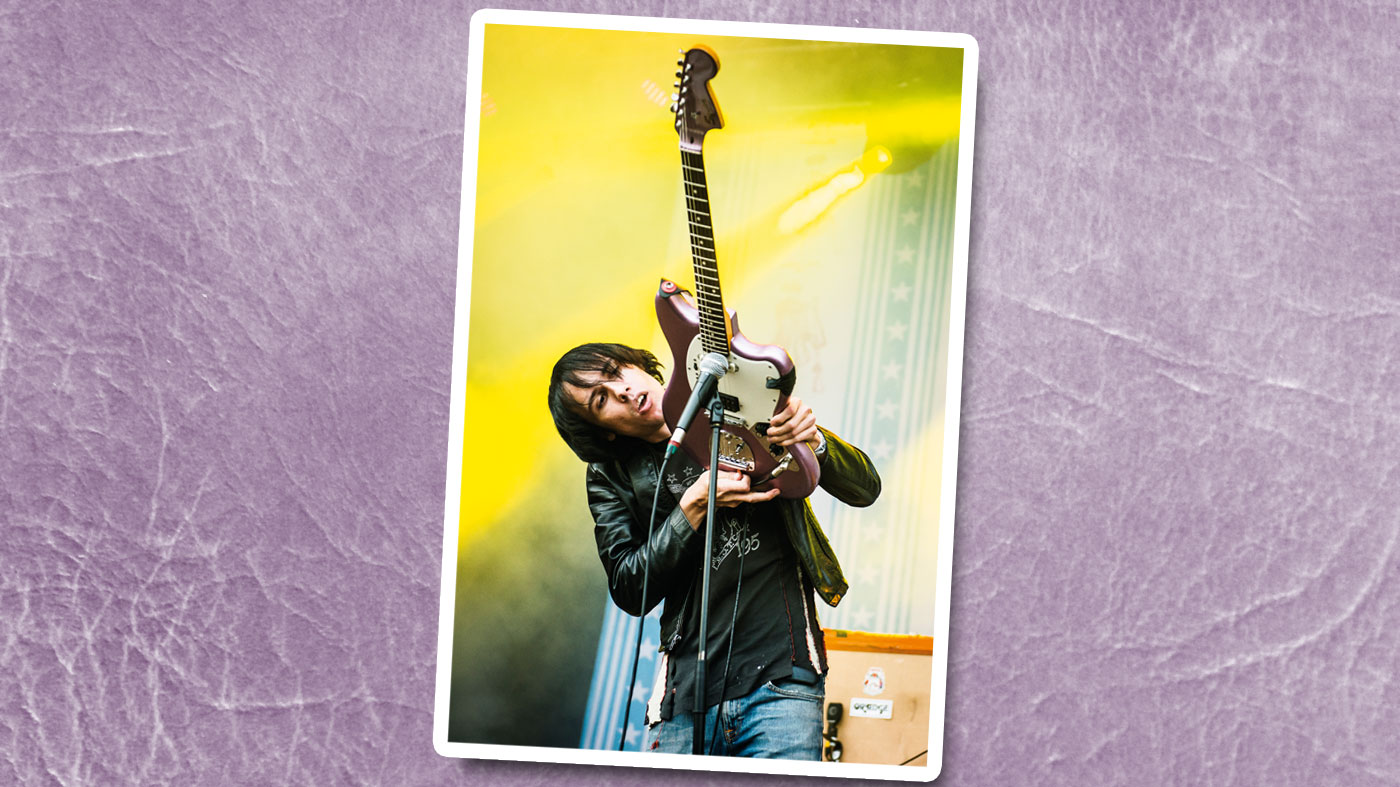
Shaping the future
When did you realise you were happy with the final design?
Ryan: “I think when we knew we got them right was when we started playing them live. You don’t just play anything live, you know?”
I can’t think of many examples of signature guitars being a new shape
Gary: “Yeah, I mean, to go on the main stage at Glastonbury or Reading with an instrument you don’t trust, you’d just never do it, but Ryan’s been using the Mus-uar all over the place. It’s cool, I can’t think of many examples of signature guitars being a new shape.
“It’s why it harkens back to the Vista series for me, because they were new shapes and that’s the sort of spirit that it was done in. That’s why it’s so awesome that it’s a Squier as well.”
Ryan: “I also really like that you feel a Squier can, you know, do a bit more ‘aerial work’ than a Fender, you know?”
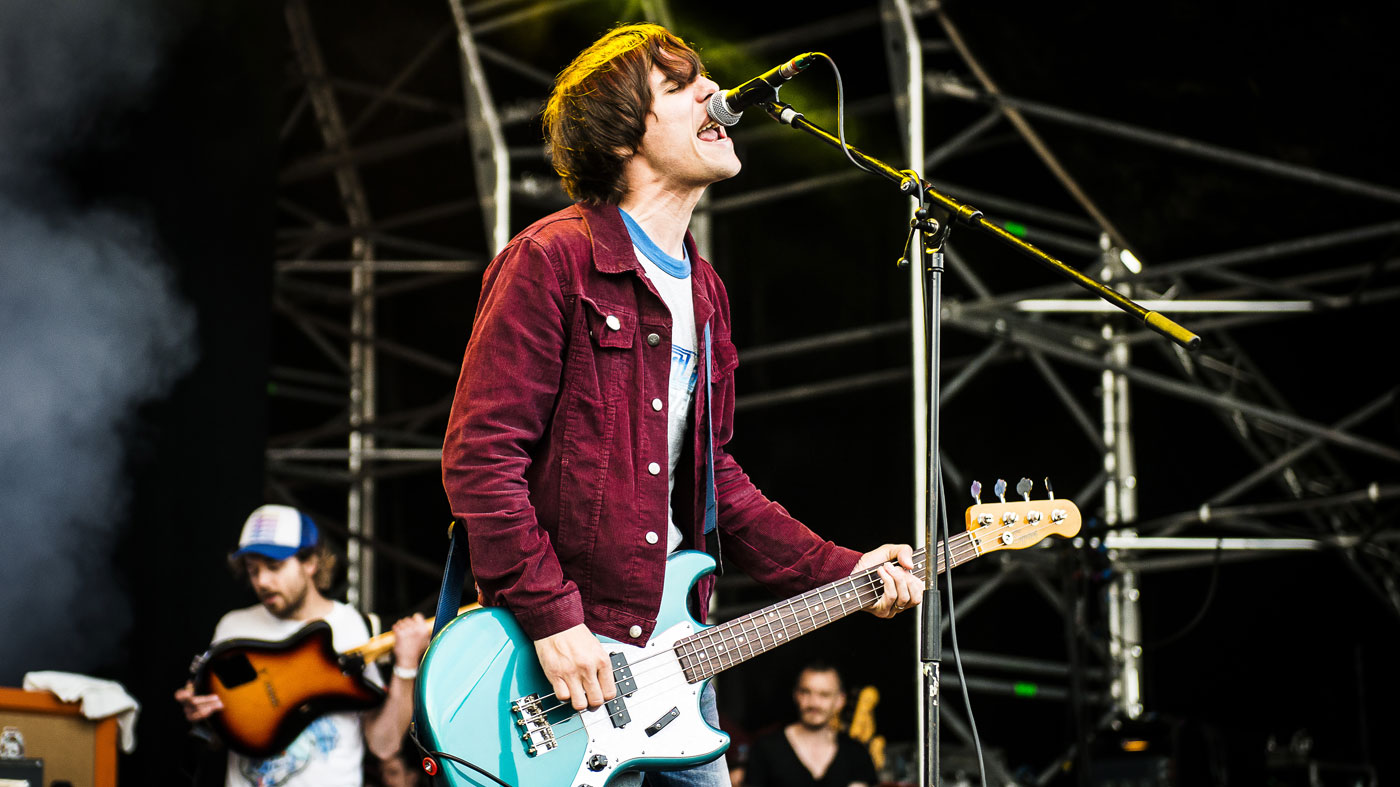
Guitar demons
What was your first encounter with an electric guitar?
We had an electric guitar in the case in our shed and we used to be scared of it because we thought it was Nosferatu in his coffin!
Ryan: “I remember we had an electric guitar in the case in our shed and we used to be completely scared of it because we thought it was Nosferatu in his coffin! When we got it out, it was this 60s oddball, a Broadway. It was really difficult to play.”
Gary: “Just the action from hell.”
Ryan: “Instead of a 1/4” output it had an 1/8” output! It was a real nightmare. But when we saw that it just seemed so cool.
Gary: “It was the most exciting thing in the world. It had the tremolo arm so you could hit it and feel like you were playing properly.”
Ryan: “And then we got really into Queen, our uncle turned us onto them, around nine or 10. We found this guitar teacher who looked like Brian May, so we started going to him for lessons. He was a real speed demon, shredder guy.”
Gary: “He’s called the String Surgeon. He’s from Wakefield. He still repairs our guitars when they do too much ‘aerial work’!”
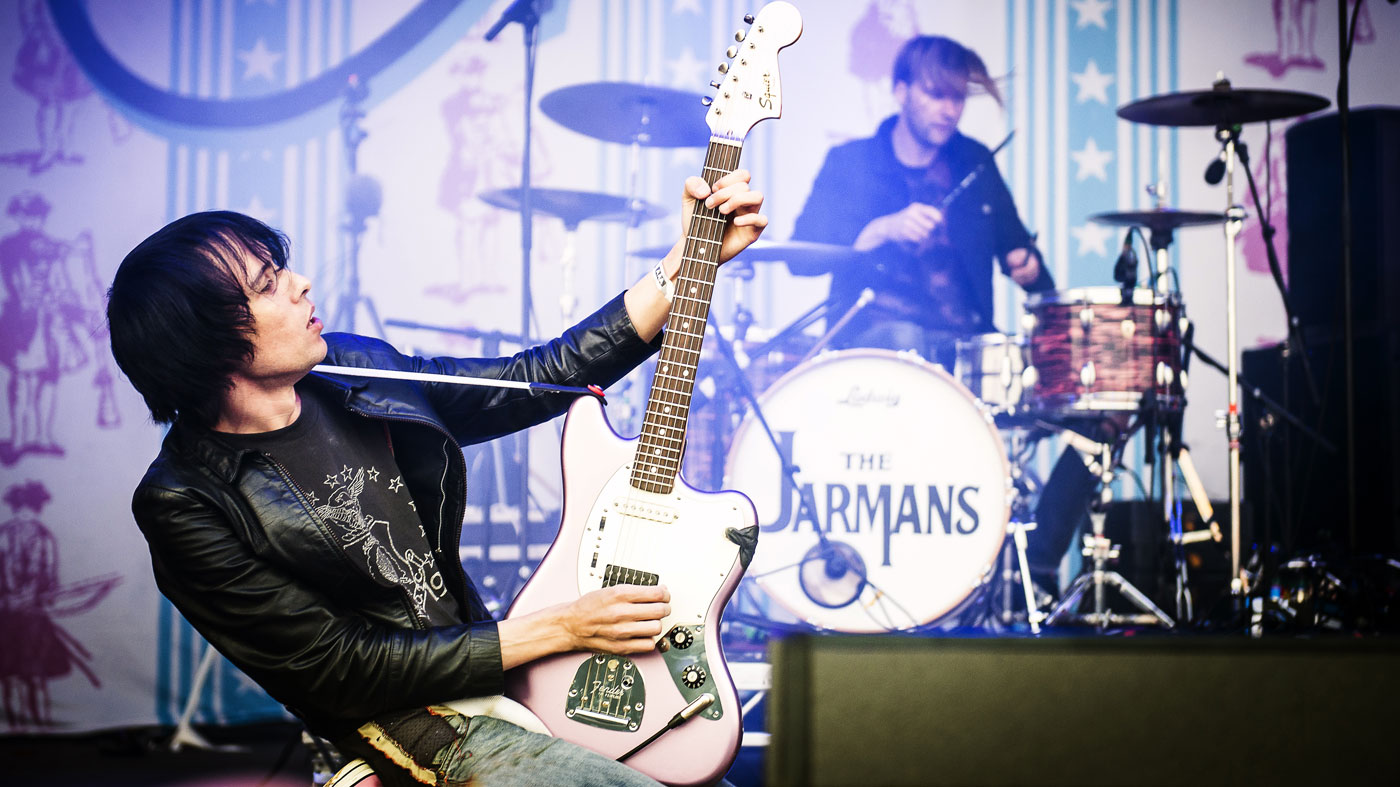
Turning points
What was the turning point for you?
Ryan: “We got turned onto Nirvana in ’93 and all of a sudden playing guitar seemed like something you could definitely do. It was like a shift in the mindset. Rather than aspiring to be a guitar hero, it became…”
We’d play violin in orchestras, but we wanted to be in the practice room, fumbling our way through Ramones songs
Gary: “A vehicle for writing songs. We’d been playing violin since we were seven, so even though we didn’t know the chords or have any experience on the guitar, we were pretty musically proficient by that time, but learning the guitar was freedom from that academic approach to music.
“We’d play in orchestras and play very complex concertos, but we wanted to be in the practice room, fumbling our way through Ramones songs. It was like the polar opposite.”
Ryan: “We saved up £50 once and we thought we could either have five guitar lessons for that, or buy a fuzz box… and then you don’t need lessons. So we bought the fuzz box! That was a genuine conversation we had!”
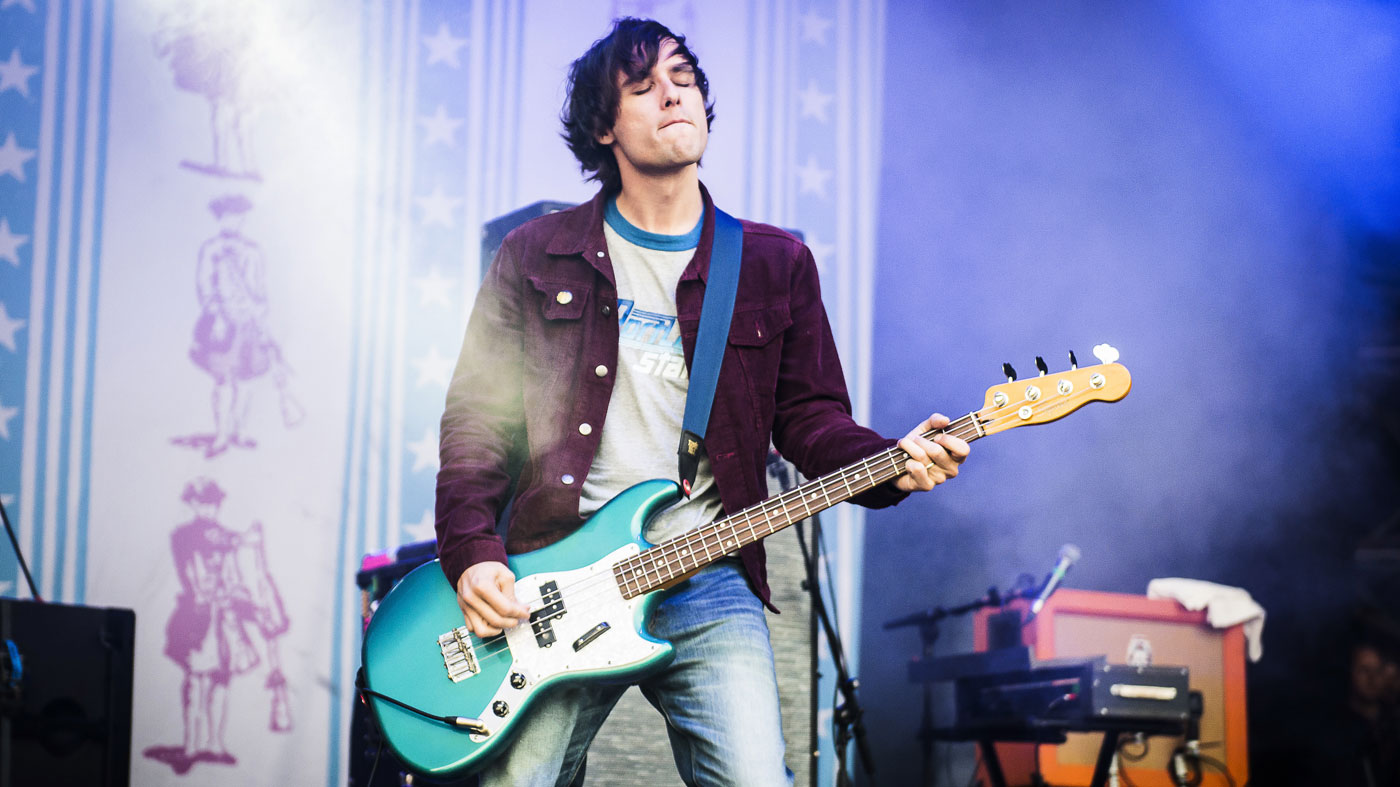
Different angle
There’s a lot of talk about the ‘gentrification’ of the music industry - do you think a working class band such as yours would still make it today?
Ryan: “We’ve got the chops and I’m confident enough to say that, yeah, I think we would. But I think it would seem much more radical. The paradigm has definitely shifted.”
We’ve never been caught by the trappings of the industry and that’s put us at an advantage in a lot of ways
Gary: “We were very self-sustaining. We always had that attitude. We used to be able to tour and turn a profit even in the days when we were playing small venues and the reason why was that we did it in the exact same manner that we did as a DIY band.
“We’ve toured with bands that got big really quickly and we used to be really surprised at the excess of crew and money and hotels that they had in their early days. It would always leave us feeling quite alienated.”
Ryan: “They’d say, ‘What are you doing next?’ And we’d say, ‘We’re touring America’. And they’d always be like, ‘Ah man, that would be so rad, but we just can’t afford to go out there.’ You’d say, ‘Well, can’t you just scale stuff back?’ And it’d be like, ‘Ah no, we can’t really go without our lighting guy…’”
Gary: “If you start out and build it up, you can basically do it on whatever level you want. We’d just like to feel that we’ve never been caught by the trappings of the industry and that’s put us at an advantage in a lot of ways.”
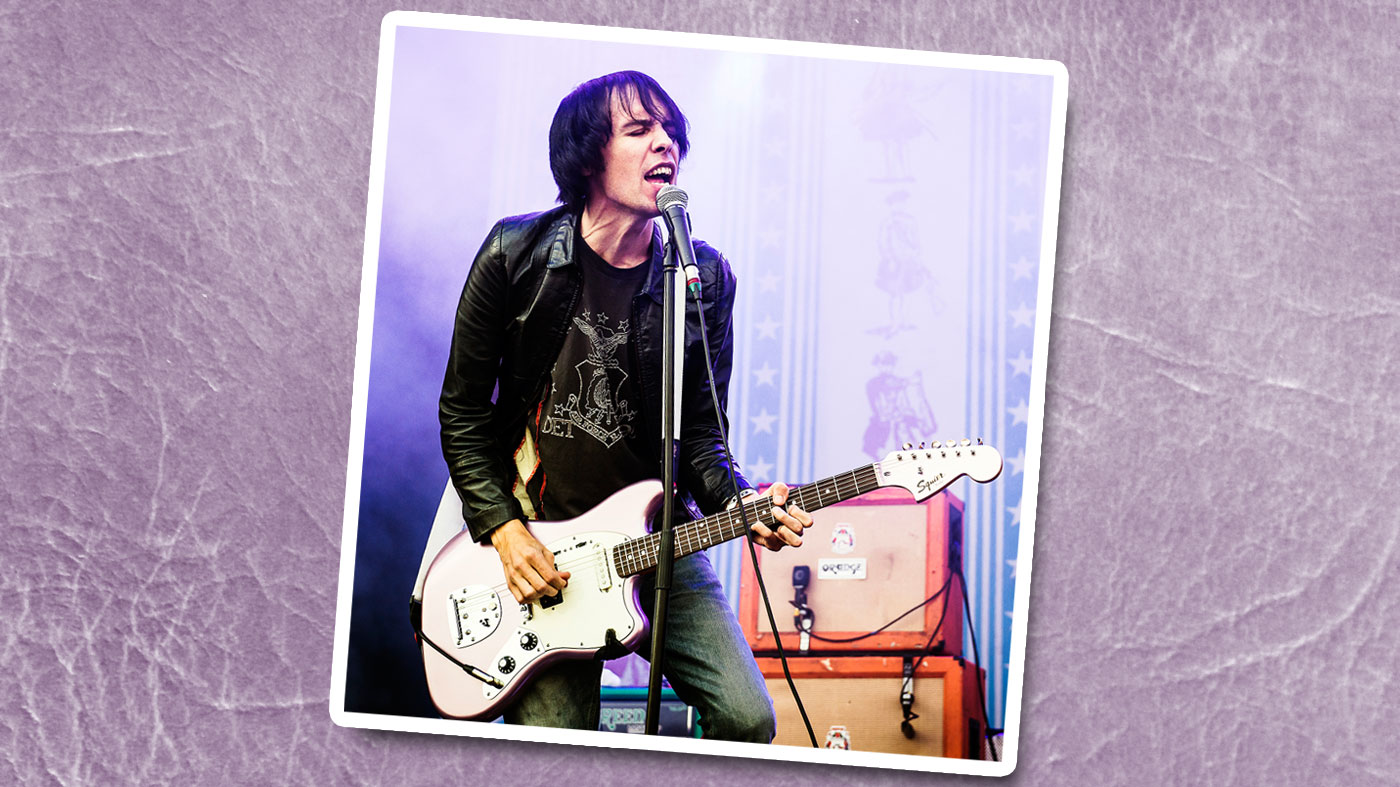
Essential feedback
What are the essential truths you’ve learned about making music?
Ryan: “I think just trying to maintain a degree of spontaneity is really good. As soon as you get bored that’s when you start faking stuff. The human element is the most important thing and it’s the first thing that’s edited out in modern recording.”
There’s still a lot of 'adults' in the music industry... A lot of bands are catering towards these people
Gary: “On a trivial level, one thing I’ve learned is that people are still really adverse to feedback! Way more than you would think. Even people you’d think would understand it. People see it as a mistake.”
Ryan: “‘Adults’, you know? There’s still a lot of adults in the music industry and it’s really bizarre. I think that’s why the current trend is quite gentrified. A lot of bands are catering towards these people. You’ll see people in these highfalutin publications and they’ll say, ‘There was a lot of feedback in this set.’ It’s like, ‘Yeah, I know! We were making the guitars feedback!’”
You’ve often associated success with a sensation of ‘gate-crashing’ in the past - do you still feel like that now?
Gary: “You just can’t be complacent, I think. If you have a top 10 record, it doesn’t mean you should feel ‘Oh, now we’re used to that’, you should still feel that same way. I don’t know if it’s humility, but I don’t know what sort of person you’d have to be to take that for granted. You’d have to have lost your sense of wonder, you know?
“The guitars are a good material example of how privileged we are: that doesn’t happen to many bands or many musicians! How many people get to turn a doodle into a finished thing, you know?”
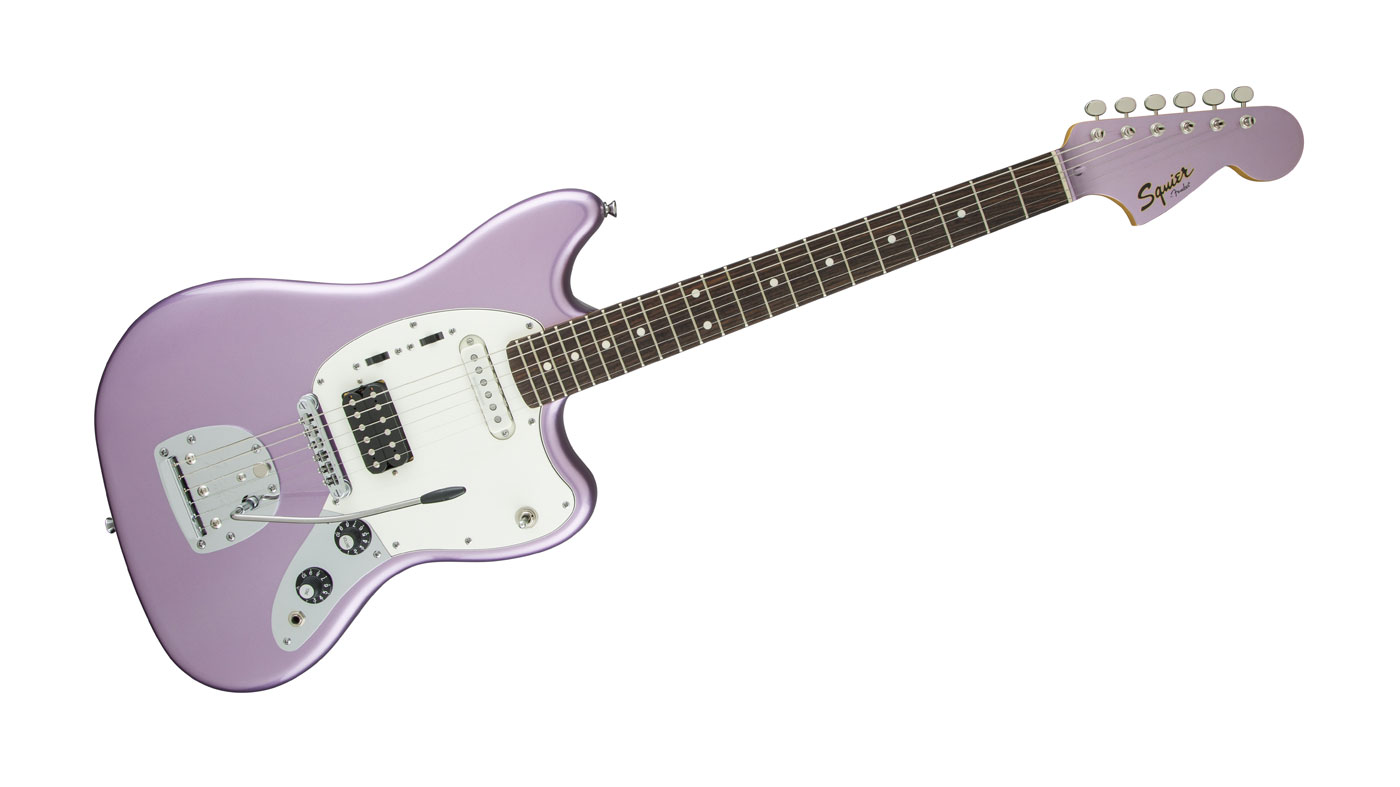
Up close with... Ryan's Mus-uar
Body
Ryan: “I got the Jagstang [as a teenager] and I used to spend ages drawing it, but I always thought the shape was a bit weird. I thought, I could do one that’s like ‘Mus-uar’. It turned out that the two body shapes that I’d cut together balanced perfectly.”
Hardware
“One of my personal hangups, is trying to make sure that a guitar sustains as much as possible. That definitely factored into the decisions on the bridge and tailpiece.”
Contours
“The original prototype was a slab body. They sent me it to try out, and I realised that I’d forgotten to add contours!”
Humbucker
“All of my guitars from Fender, I mod them to have a humbucker in anyway, so that just seemed like a pretty natural mod to me.”
Vibrato
“I really wanted it to have the Jaguar vibrato on it, because of the Jagstang, with it having the Mustang tailpiece, and I wanted that third bridge option.”
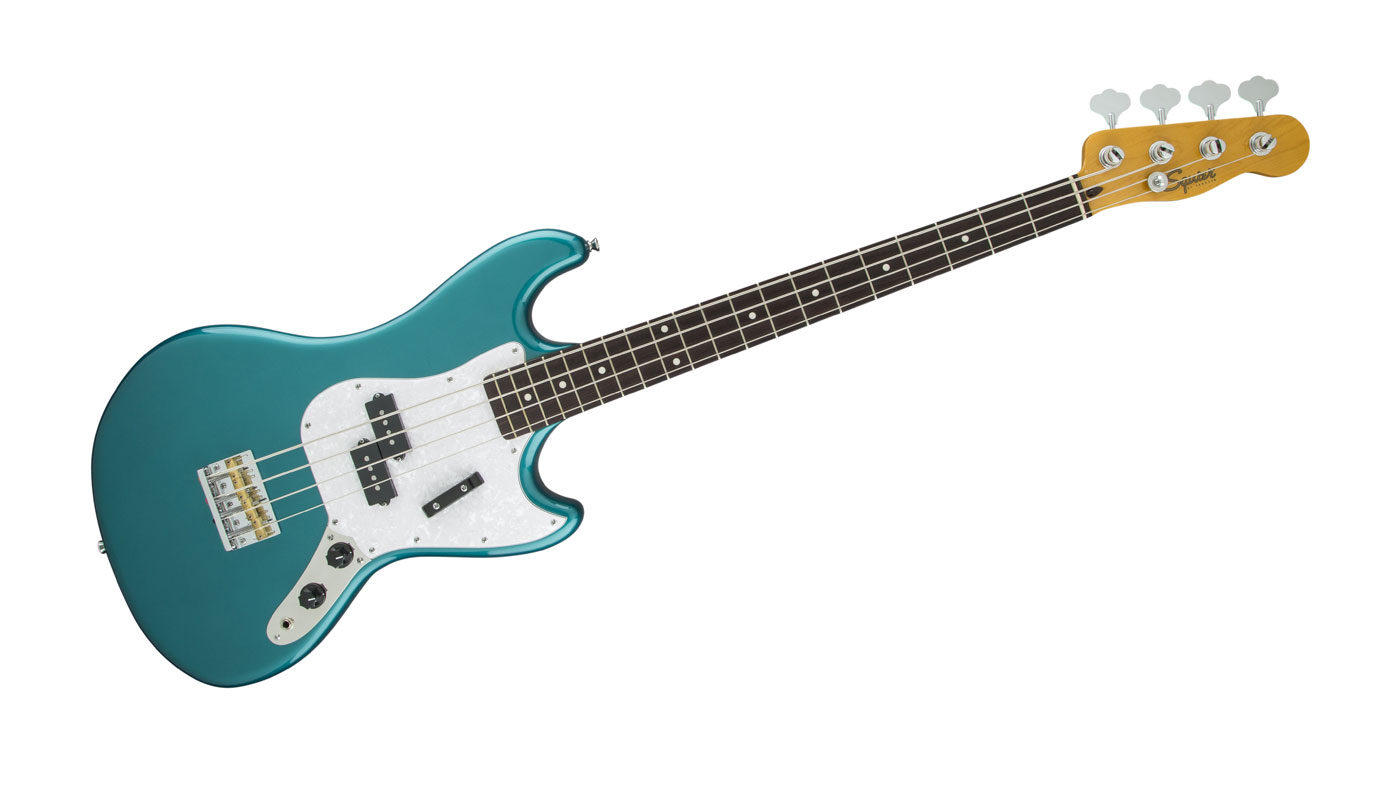
Up close with... Gary's Mus-V-P
Body
“We based the design on the Bass V, which is pretty well derided for being out of shape and not very cool! We loved them because they were just so odd. I wanted to bring that shape back and have a sort of cross between a Mustang and a P-Bass.”
Balance
“[The prototype body] was really under-sized and there was a lot of neck dive, so we had to scale the body up and then re-proportion it because it was starting to look pretty unusual!”
Neck
“I use a P-Bass, but before that I always used Mustangs and I wanted to find a balance between the two [scale-lengths], so we made a medium-scale neck.”
Headstock
“We put the signatures on the back of the headstock - that’s the only way we could deal with the reality of it!”

Matt is a freelance journalist who has spent the last decade interviewing musicians for the likes of Total Guitar, Guitarist, Guitar World, MusicRadar, NME.com, DJ Mag and Electronic Sound. In 2020, he launched CreativeMoney.co.uk, which aims to share the ideas that make creative lifestyles more sustainable. He plays guitar, but should not be allowed near your delay pedals.
“Every note counts and fits perfectly”: Kirk Hammett names his best Metallica solo – and no, it’s not One or Master Of Puppets
“I can write anything... Just tell me what you want. You want death metal in C? Okay, here it is. A little country and western? Reggae, blues, whatever”: Yngwie Malmsteen on classical epiphanies, modern art and why he embraces the cliff edge
“Every note counts and fits perfectly”: Kirk Hammett names his best Metallica solo – and no, it’s not One or Master Of Puppets
“I can write anything... Just tell me what you want. You want death metal in C? Okay, here it is. A little country and western? Reggae, blues, whatever”: Yngwie Malmsteen on classical epiphanies, modern art and why he embraces the cliff edge











